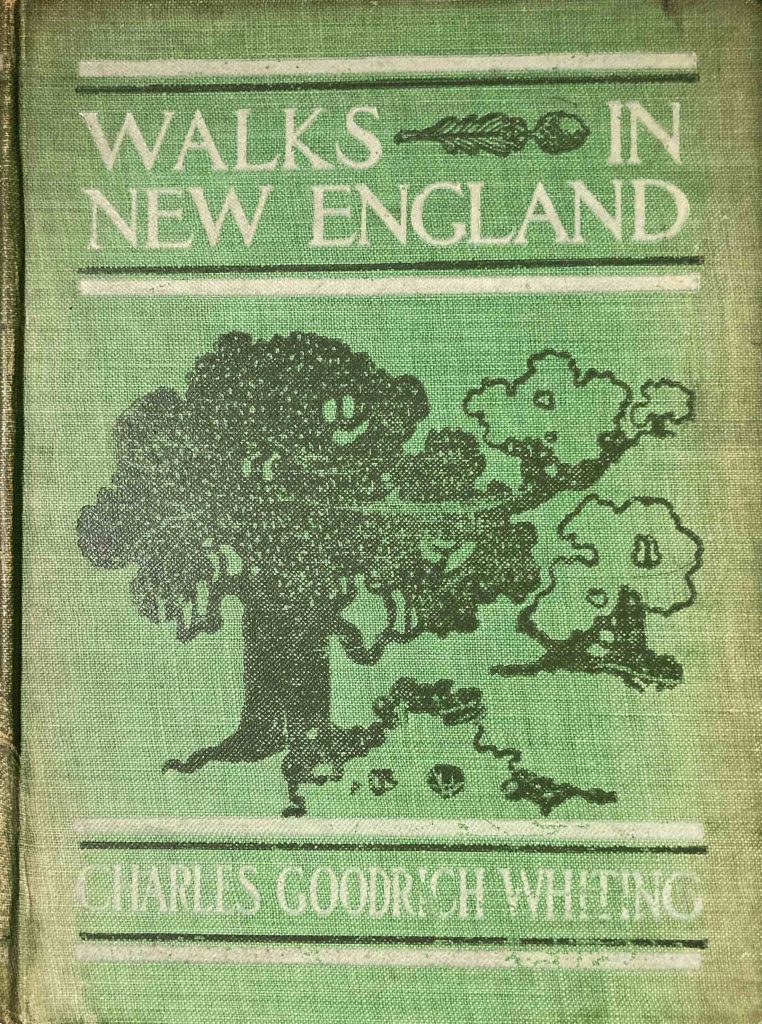
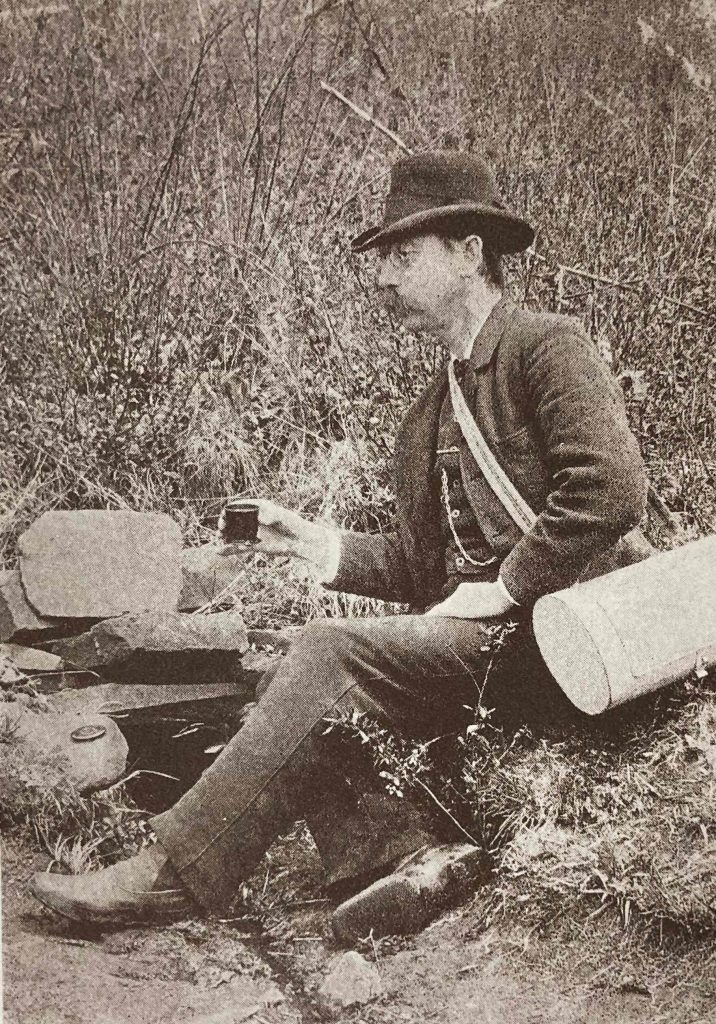
If you happen to search this book by the title on Amazon or any purveyor of used and/or new books, you are likely to encounter quite a few hiking guides to New England. This is not one of them. The author, Charles Goodrich Whiting (1842-1922), lived and worked in the Springfield, Massachusetts area, and clearly spent many hours out-of-doors. Yet while he writes fondly of the natural landscape (particularly its botanical elements), he does not report on any actual walks he has taken. The frontispiece photo shows him taking a break on a hike up Mount Tom; a brief statement about the photographs (in stunning sepia) mentions “constant companions” that I assume accompanied his hikes; but only once does he report on an actual walk. Even then, all we know is that he and several others climbed the south side of Mount Tom one autumn, walking along the ridge and finding 56 wildflower species in bloom (the first BioBlitz?). Otherwise, there is an endless cavalcade of brief essays (few more than four pages) describing seasonal offerings, mostly plants in bloom at a given time. Blended into the volume are many poems, some enchanting (works of Emerson, Whitman, and Longfellow) and others less so (his own). The third ingredient of this book is a pious Christianity that sees the natural world through a highly positive, somewhat transcendental lens. If not obsessed with the question of death, Whiting certainly brings it up frequently, reminding the reader (and himself) over and over that it does not exist. The essays themselves are arranged in an arc of the seasons, from late winter back through to midwinter. Whiting was an editor for the Springfield Republican newspaper, and author of a Sunday column, “The Saunterer.” The essays in Walks in New England were likely compiled from several years’ worth of his columns. As a result, there is a fair bit of repetition; the same wildflower appears in bloom across multiple essays. One essay may speak of particular weather conditions, but the next essay might be from another year altogether. As a work of phenology, it could have been improved, at the minimum, by an indication of the original publication dates of each piece.
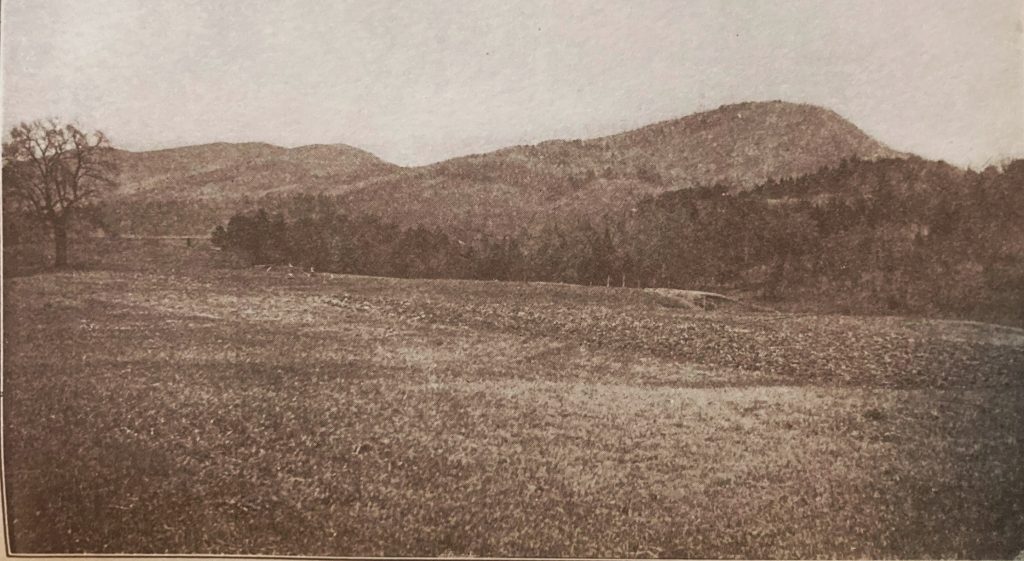
Did I mention that my copy of this book, once in the library of C. J. Peacock, had many uncut pages in it? Apparently, I am the first one to have read it from cover to cover in nearly 120 years.
Now that I have thoroughly disparaged the book, I will argue that it is one that bears closer scrutiny: his Christianity would hardly be called conventional, for one. And for another, his outlook on human civilization and its environmental impacts seems far more ecologically aware than I would have suspected in 1903.
“Jesus was a pantheist…he knew no space where God was not,” Whiting declared. And while the gnostic, pantheistic Jesus is recognized in some circles today, it was certainly not the conventional perspective on his nature at the time Whiting lived. There are glimmers of this Jesus in the four gospels of the New Testament; but mostly this is the Jesus of the Gospel of Thomas, an early Christian scripture excluded from the New Testament as apocryphal. The 77th verse from that gospel reads, “Jesus said, ‘I am the light that shines upon all things. Indeed, I am all things. Everything comes from me, and everything returns to me. Whenever you split a log or turn over a stone, you can find me there.'” But Whiting’s spirituality does not stop there. Consider these passages from his book:
Let us open our eyes, our ears, our hearts to the great current of life, of which we are but a part, — how small a part or how great we cannot yet imagine…
The universe, from least atom to greatest concourse of atoms, from the simplest sensitiveness to the furthest reaches of man’s soul, is all one living being, of which man no less surely and no more truly than the amoeba is the expression…
All life is one; we are one with tree and shrub and flower, one with squirrel and bird, one even with the sinuous serpent…
On a mountain top dwells the vast Oversoul, and man accepts his place, and is silent…
Although Whiting cannot help but single out a serpent, this one is beneficent, a vital part of creation in which “everything in Nature has its value.” But alas, like Eden, this garden universe in which we exist as part of all that is also has a serpent in the darker sense. Where that evil arises, how harm can come from a part of all that is (a fragment of God?) is unaddressed. But it is there, and it is us. After another lovely passage about the beauty of Nature, Whiting interjects, “So goes on the life of earth, only interfered with by man, who does his worst to ruin and obliterate this constant impulse of life.” A few pages later, in a different essay, Whiting again disrupts a peaceful forest landscape to add social commentary: “…and as one drinks of the cold spring beneath the hemlocks, he partakes of the greatest blessing of Nature, the pure essence of her life, distilled through clouds and suns, and filtered through the channel of the holy earth, where as yet man has not arrived to delete and pollute with his many inventions.” Finally, here is one more passage of condemnation, with the added thought that what we do to nature we do ultimately to ourselves: “As for man, only he introduces a breach in the order of being, and destroys tree and flower and bird without respect to their offices, despoiling himself the worst of all.”
At various points, Whiting identifies several ways that humans have adversely impacted nature. One is deforestation; there are repeated references to “the woodsman’s axe”, and Whiting notes that almost all trees in the region are no older than 30 years. Another is air pollution, “the soft coal smoke that hangs over the valley,” an inevitable by-product of industrialization, and entirely unregulated at the time. The steam railroads, meanwhile, were sparking many fires along their routes. Yet another destructive force is the hunter:
Now all the forest regions would be full of squirrels, rabbits, foxes and others of their kin, — of grouse and woodcock, too, — were it not for the hunters, who almost outnumber the game. The woodland on our western hills abounded in these charming creatures, 40 years ago, but now there are probably more gray squirrels in Springfield streets than there are on Mount Tom or Mount Holyoke. It is probable that city protection may yet be the only means to preserve them.
But the worst of the hunters were those going after birds, mostly for the millinery trade. The result had been not only the decimation of many bird species but an ecological impact too, as Whiting explains:
In the state of Nature all these [insects] are kept in subjection by the birds, but since of late years the birds have been slaughered by wholesale to make women’s hats hideous, the balance is lost, and hence we have plagues of elm beetles, cottony louses, and gypsy and brown-tailed moths. Thousands of varieties of insects have found their proper food on trees from time immemorial, and might continue to do so without reminding us of the Plagues of Egypt, were it not for the women who want birds and feathers of birds on their hats… Why do they proclaim themselves murderers?
Dutch Elm Disease, spread by the elm beetle, arrived in the United States. Could it be that the depredation of birds in the late 19th and early 20th centuries helped enable this beetle to spread the blight more rapidly than otherwise would have been the case? Beyond this intriguing prospect, I have to admit that I am quite impressed by Whiting’s grasp of how food chains work, way back in 1903.
Finally, Whiting also appears to have decried in humanity what we would refer to today as a limited grasp of sustainability.
What has man been given reason for? Apparently, to make a dollar to-day. forgeting that generations are to come after him to whom this dollar will be valueless because long since expended, and whom his destruction of the very sources of life has left us poor indeed…
What the earth is to render, what society is to become, when we are gone, — these things are not sufficiently regarded by the present generation.
Wow. That sounds frightfully like our present situation. It is quite depressing, really. Whiting felt the same way. After a few pages indicting humanity for these crimes against Nature, he announces, “Let us try to escape from these difficult and dispiriting thoughts,” and returns to his descriptions of field and forest scenes. As T.S. Eliot would later observe in Burnt Norton, “Humankind cannot bear very much reality.”
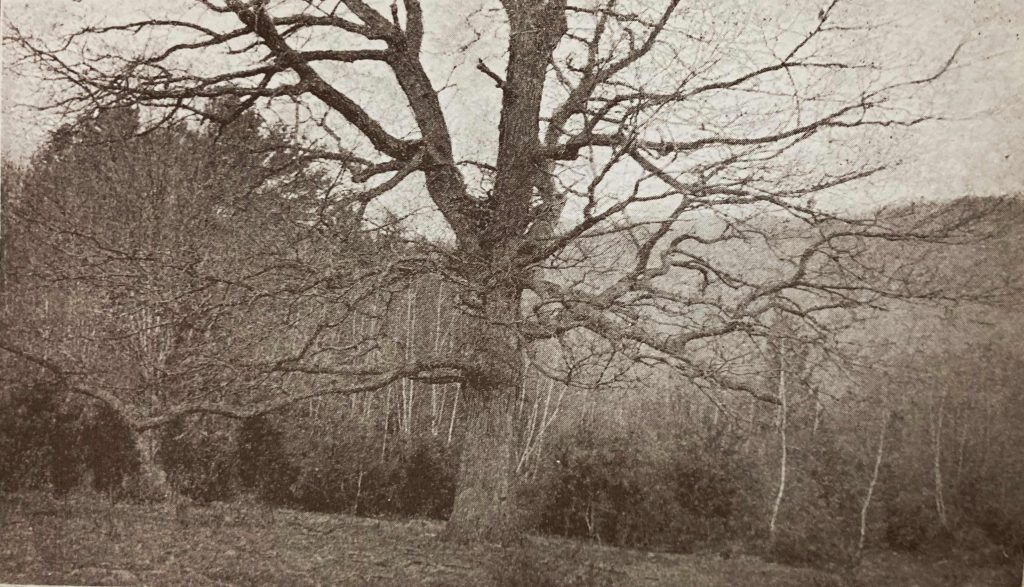
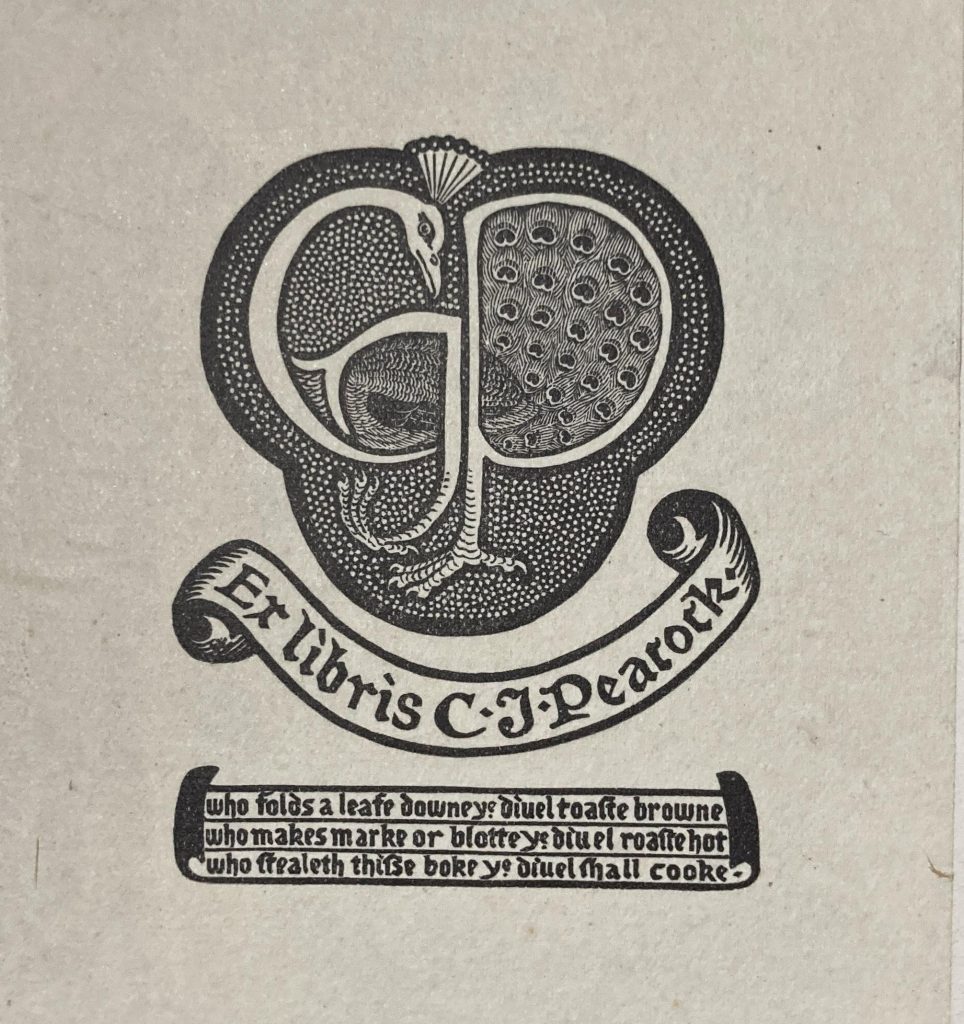
Finally, about C.J. Peacock (not to be confused with J. Alfred Prufrock, also from T.S. Eliot): it turns out that another book from his collection ended up in the holdings of the University of Prince Edward Island, which happens to have established a program called Book Lives. It traces, wherever possible, the life stories of those who originally owned the books. In this case, C.J. Peacock was born in 1834 in Yorkshire, England. He apprenticed to become a draper (a very different “man of the cloth”) but ended up working as a dentist in Scarborough, England. He retired in 1911, but it is not known when he died or how his book made its journey back across the Atlantic Ocean.